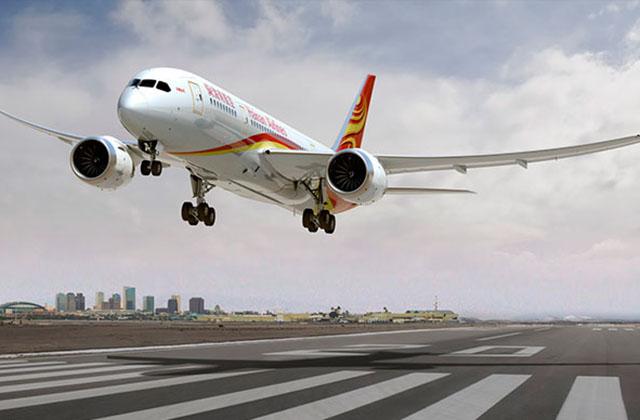HNA Restructuring Could Bring More Airline Ownership Changes | 海航集団(HNA) の再編は、中国におけるエアライン業界の再編をもたらすか

中国の海航集団(HNA)に対して行われた破産手続きは、同グループの野心的な拡大を阻む最新の動きといえる。
今の重要な問題は、再編の中でHNAに所属する航空会社がどこまで分割されるのかということだ。
1月29日、債権者は破産手続を通じた再編を求める嘆願書を提出した。まだ手続きの初期段階であることから、どのような形で再編が進むのかは明確にされていない。しかし、投資または売却により海南航空のオーナーは変わることになるだろう。これにより、中国の複雑化しているエアライン業界において、一定の統廃合が進む可能性がある。
HNAは近年、 保有する海外の航空会社(Aigle Azur・Azul・Comair・HK Express・TAP・Virgin Australiaなど)の所有権の一部を、売却または喪失している。また、Gategroup社やSwissport社といった航空関連企業の株式も売却している。
とはいえ、今でもHNAは少なくとも14社の中国系航空会社や、リース会社であるAvalon社を傘下に収めており、航空業界における存在感は健在だ。ただし、子会社の所有権の過半数を保有してることもあれば、一部しか保有していないこともある。親会社・子会社間の所有関係は極めて複雑だ。
コロナ危機の影響により破産手続に入ったアジア太平洋地域の航空会社としては、HNAが最新の事例だ(自発的か否かを問わず)。もちろん、同グループの財政難と不安定な状況はコロナ危機以前から問題になっており、そこに突然の需要と収益の激減でとどめを刺された形である。
同グループは過去数十年の間に、国内外の数十社を買収/投資することで飛躍的な成長を遂げてきた。この中には、航空会社や空港、その関連企業はもちろん、他業界の主要な企業も含まれている。この急速な拡大が巨額の負債を抱えることにつながり、2018年には保有する資産の一部を売却し始めた。
HNAの財務状況は、中国の規制当局から目を付けられていた。2020年2月には、財政難と多額の負債を持つことを受けて、グループ再編の監督と、流動性の問題に対処することを目的としたワーキンググループが設けられた。
ワーキンググループのメンバーには、海南省政府を含む政府関係者が含まれている。Fitch Rating社はこれを「事実上の官有化」と称している。しかし、これらの対応でもまだ不充分であるとして、主要な債権者は海南省の裁判所に対して破産手続に基づく再編の開始を申し立てている。
破産手続による再編は、どんなに少なく見積もってもグループのさらなる合理化を強いるものであり、中核事業である航空会社・航空関連事業にも影響する可能性がある。HNAはグループ内の航空子会社に対する新たな投資を求めることになるが、そのためには子会社のさらなる売却が必要になるかもしれない。
これら子会社に対する投資家や買い手を探すことになった場合は、航空会社に大きな関心が寄せられる可能性が高い。一部の航空会社は部分的に地方政府の所有になっているものもあり、その出資比率が高められるかもしれない。中国のより大規模な航空会社グループも、機会さえあれば傘下の航空会社を増やす動きに出るだろう。海南航空は強いブランドと魅力的な国内線ネットワークを持っている。
HNAグループは大規模ではあるが、中国においては最大手のビッグ3(エアーチャイナ・中国東方航空・中国南方航空)がマーケットをほぼ独占している。しかし、官有化されていない有力な航空会社のひとつとして捉えられている。
グループの屋台骨である海南航空は、コロナ危機前の2019年12月には国内線の座席シェアで6.2%を占めており、ビッグ3に次ぐ4番手だった。グループ内の他の航空会社も合算すればシェアはさらに10%ほど上乗せされるが、他社の子会社を考慮したランキングの順位は変わらない。
グループ再編によりグループ内航空会社に大きな変化が生じた場合、保有機材にも大きな影響を与える可能性がある。CAPA Fleet Databaseによると、14あるグループ内航空会社は計550機を保有している。ただし、179機は現在運航されていない。そして、グループ保有機全体の73.9%をナローボディ機が占めている。
海南航空がグループ内で最多となる227機を保有しており、以下、天津航空が105機、北京首都航空が90機、雲南祥鵬航空(ラッキー・エア)が57機、中国西部航空が38機、香港航空が30機と続く。
このうちリース機は345機で、全体の62.7%を占める。このため、再編に関する議論にはリース会社も大きく関与する可能性もある。Avolon社やGECAS社を筆頭に、複数のリース会社がHNA系の航空会社に機材をリースしている。
グループ全体でボーイング737MAXを中心に66機の発注残があることから、機体メーカーも関わってくることになるだろう。
HNA再編の詳細が明らかになるまでは、ステークホルダーへの影響を測ることは難しい。しばらく続いてきた事業売却の動きがさらに加速するだけという可能性もあれば、グループの解体に近い大規模な再編になる可能性もある。
Aviation Week Intelligence Network (AWIN) のメンバーシップにご登録いただくと、開発プログラムやフリートの情報、会社や連絡先データベースへのアクセスが可能になり、新たなビジネスの発見やマーケット動向を把握することができます。貴社向けにカスタマイズされた製品デモをリクエスト。
Bankruptcy proceedings filed against China’s HNA Group represent the latest step in the unraveling of the conglomerate’s ambitious expansion.
The key question now is how much further the group’s stable of airlines will be broken up during its proposed restructuring.
The group’s creditors filed a petition on Jan. 29 to restructure the company through the bankruptcy process. Since it is early in this proceeding, little is known about exactly what the restructuring will entail. But shifts in ownership of the HNA airlines are likely, either through additional investment or sale. The changes could result in some degree of consolidation in China’s crowded airline market.
HNA has already sold–or lost–its stakes in some overseas carriers in recent years, including Aigle Azur, Azul, Comair, HK Express, TAP and Virgin Australia. The group has also divested holdings in aviation companies such as Gategroup and Swissport.
However, the HNA Group still holds an extensive airline portfolio, with at least 14 mainly Chinese carriers and lessor Avolon under its umbrella. In some cases, these are majority owned, and in others the group holds a smaller stake. The ownership links between the subsidiaries and the parent are extremely complex.
HNA is the latest of several Asia-Pacific airline companies to find itself in bankruptcy court—whether voluntarily or involuntarily—since the COVID-19 crisis began. Of course, HNA Group’s financial woes and shaky condition predate the pandemic, and the sudden demand and revenue drop was the final straw.
The group expanded dramatically during the past few decades through acquisition or investment in dozens of companies in China and overseas. These included airlines, airline-related companies, airports and major businesses in other sectors. The group overextended itself and ran up massive debt, so in 2018 it began to divest some of its holdings.
HNA’s finances attracted increasing scrutiny from Chinese regulators. The group’s financial difficulties and onerous debt caught up with it in February 2020, when a working group was appointed to oversee a reorganization and to address the conglomerate’s liquidity headaches.
Government representatives were part of the working group, including the Hainan provincial government. Fitch Ratings described this as “an effective state takeover of the company.” However, these efforts were not enough, and major creditors have now petitioned Hainan courts to begin restructuring under the bankruptcy process.
The bankruptcy restructuring will mean–at the very least–further streamlining for the HNA Group, and it may fall back to its core airline and aviation holdings. HNA will be looking for new investment in its aviation subsidiaries, but it might also have to divest more of the group members.
There would likely be significant interest in its airlines if it chooses to seek investors or buyers for these companies. Some of the carriers are part-owned by provincial governments, and they may increase their stakes. China’s larger airline groups would probably also be interested in adding more carriers to their stables if the opportunity arose. Hainan Airlines itself has a strong brand and an attractive domestic network.
Despite its extensive holdings, HNA Group is not one of the biggest players in the Chinese market, which is dominated by the so-called big three: Air China, China Eastern and China Southern. But HNA is considered one of the larger Chinese airline groups that is not state-controlled.
The HNA Group’s cornerstone member–Hainan Airlines–held a 6.2% share of seat capacity in the Chinese domestic market in December 2019 before the pandemic hit, ranking fourth after the big three. This share would rise by about 10 percentage points if other HNA group airlines are factored in, although this would not change its ranking relative to the rival groups and their subsidiaries.
There could be significant fleet implications if restructuring results in big changes for HNA Group’s airlines. The 14 carriers in this group have a total of 550 aircraft, according to the CAPA Fleet Database. However, 179 of these are currently inactive. Narrowbodies comprise 73.9% of the group’s collective fleet.
Hainan Airlines has the largest fleet in the group, with 227 aircraft. Tianjin Airlines has 105; Beijing Capital Airlines has 90; Lucky Air has 57; West Air has 38; and Hong Kong Airlines has 30.
HNA Group has 345 leased aircraft, or 62.7% of the total. So lessors could be heavily involved in restructuring talks. Several companies lease aircraft to HNA carriers, with Avolon and GECAS at the top of the list.
Manufacturers will also be involved, as the group’s airlines have 66 aircraft on order, mainly Boeing 737 MAXs.
The fallout for stakeholders is hard to gauge until more details of HNA’s restructuring emerge. It may simply accelerate the divestment process that has been underway for some time, or it could lead to a more extensive breakup that would have broader ramifications.